Explore the best places
Results for Serra+da+Estrela in Portugal
Joanes
- country
- heritage
Aldeia de Joanes
6230-045, Fundão
Located on a counterfort of the Gardunha mountain, between the valley and the foothill, this is one of the oldest villages in the parish. The romanesque church with ulterior details, the chapels of the Holy Spirit, Saint Pelágio, Our Lady of Conceição, Our Lady of Amparo, Saint Tiago, Saint Sebastian and Saint Catarina, the House of Saint peter, the custody, the 16th century houses and the fountains of Figueiredo and of the Rua da Fonte (Fountain Street) stand out. Nearby, there are the ruins of the Convent of the Seixo of the Capuchos Friars, of the early 16th century. The …

Monsaraz
- country
- heritage
Monsaraz
7200, Reguengos de Monsaraz
Located on the top of a hill, the village of Monsaraz was once a pre-historic "castro" (a celtic village). There are several megalithic monuments nearby, such as the menhir of Outeiro, the menhir of Beloa and the cromelech of Xerez. A special not to the Convent of Orada (18th century), the Hermitage of Saint Catarina, the Square of Saint Bartolomeu, the Church of Saint John the Baptist and, most of all, the Castle, with its four gates, two streets and a wide square, the Square Dom Nuno Álvares Pereira, where the Mother Church, the old hospital and the "Paços da …
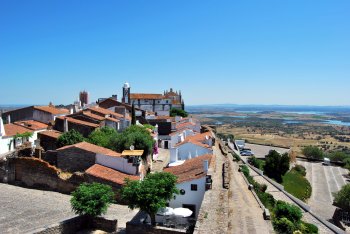
São Vicente da Beira
- country
- heritage
São Vicente da Beira
6005, São Vicente da Beira
It was one of the first villages with register, dated from 1195. Located at the foot of the southerly ladder of Gardunha Sierra, it stands out for its architectonical patrimony: the Town house, pillory, mother-church (where is the reliquary of S. Vicente), Misericórdia church (with the sacra art museum), chapels of Santo António, S. Sebastião and S. Francisco and Nossa Senhora da Orada, Calvary, emblazoned houses, fountain, Town hall and Misericórdia Hospital. The strawy chairs, the patchwork-quilts, the linen towels and wood works are some examples of the local handicraft.
Alvito da Beira
- country
- heritage
Alvito da Beira
6150, Proença-a-Nova
The village of Alvito da Beira may have been moorish in its origins. According to the historians, it was the moors who firstly introduced the olive trees in the region. By the early 20th century, ther were 10 olive oil presses in the parish. Small walls were built, of which there are still vestiges, to protect the olive trees. The architectural heritage includes the mother church, the crucifix, the font velha (old fountain), the Mó fountain, the fountain at Dáspera and the Sobraínho fountain. The craftswork includes tapestries, hand made shoes, iron objects and more.

Jardim do Torel
- country
- leisure
Rua Júlio de Andrade
1150, Lisboa
Built in the 1930’s, the name of this garden with romantic characteristics is due to the former owner of this area, the judge of the high court Cunha Thorel. It has interesting flower beds, lovely shades, and small corners giving you privacy and a great view of down town. The Torel garden also has an elegant gate, two lakes, one of them with an old spring, a statue representing the bust of the piano player Viana da Mota, card-tables and traces of what might have been, during the XVII and XVIII centuries, a magnificent farm.
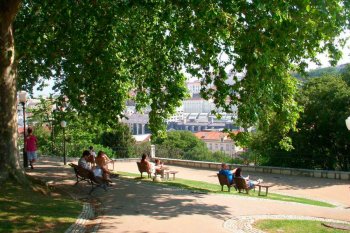
Parque da Devesa
- country
- leisure
Rua Fernando Mesquita, 2453
4760-034, Vila Nova de Famalicão
Espaço verde urbano com 27 hectares, situado no centro da cidade de Vila Nova de Famalicão. É um local privilegiado de contacto com a natureza, lazer, convívio e desporto. O rio Pelhe, que atravessa o parque em toda a sua extensão, contribui para a sua beleza. Propicia ainda cultura e a educação, vertentes para as quais contribuem os edifícios aí implantados, a Casa do Território, o Anfiteatro e os Serviços Educativos.
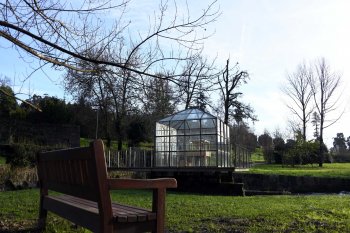
Parque de São Roque
- country
- leisure
Rua de São Roque da Lameira
4350-307, Porto
The well known São Roque Park is a large space, with lots of trees. You can take a walk, have a café or do a picnic at using the benches and tables you’ll find there. This Park used to be the former Quinta da Lameira and opened to the public in 1979, after being bought by the Town Hall. Right at the entrance there’s a branchy, fresh grove and, as you walk through it, you’ll find stone benches, lawn platforms, a lake, a terrace over the Douro River, a small box labyrinth and a playground. During the summer, the garden …
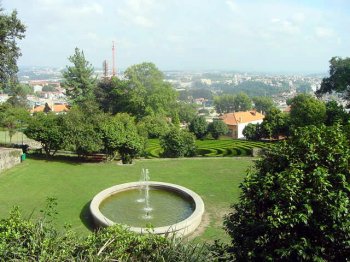
Aldeia Galega
- country
- heritage
Aldeia Galega
2580, Aldeia Galega
A village with curvy, narrow streets, located between the Montejun to-Sintra mountains and the springs of the Alenquer Brook. It boast several vestiges of different civilizations: a roman road with abridge, the friars pathways to the convents of São Jerónimo do Mato and Santo António de Charnais and the medieval Galician road. One may also visit the ruins of the palace of Dona leonor (the place where the queen rested whem she went to the thermae of the Caldas da Rainha), the pillory, the church of Prazeres and the chapel of the Espírito Santo (Holy Spirit). A special note to …

Aldeia da Luz
- country
- heritage
Luz
7240-100, Mourão
Aldeia da Luz, as it is known today, is the result of the advancement of time. With the construction of the Alqueva dam, old Luz, of Paleolithic and Neolithic origins, was submerged, as was Lousa Castle, of Roman origin, and some Roman road crossings the Guadiana. Against the wishes of the population, a village was built from scratch, about two kilometers from the old one, inaugurated in 2002. Despite the attempt to maintain the previous features and heritage assets, it is impossible to perfectly reproduce what the waters carried away. To prevent this village's past from being equally submerged, the …
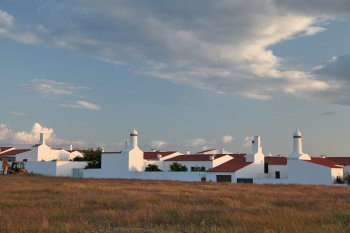
Forninhos
- country
- heritage
Forninhos
3570, Forninhos
Dating back to the visigoths, this villag and parish of Aguiar da Beira has about 274 inhabitants. They are mostly farmers (wine, olive oil, wheat, corn and beans), cattle raisers, house builders and small merchants. One must visit the Chapel of Our Lady of the Verdes (classed as an Publish Interest Construction in 1932 and one of the richest in the parish) and the Dormas caves. The mother church of Forninhos (remodelled in 1797 in the baroque style), the picnic area and the mills on the banks of the Cabreira brook are also worth a visit. Its main celebration is …